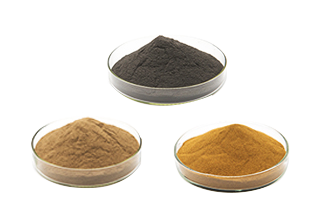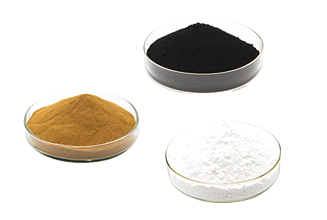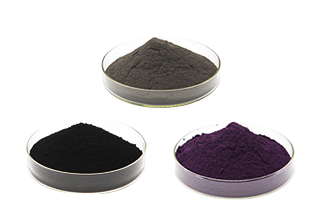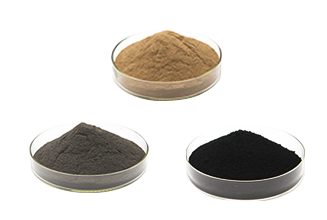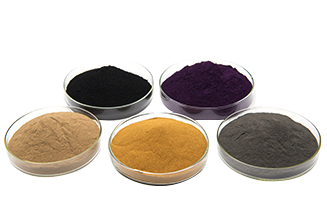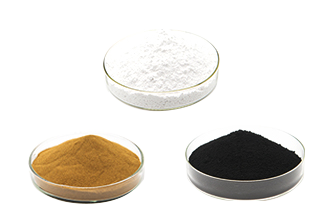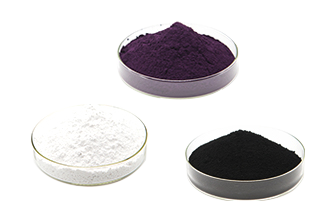Investigation on Synthesis of Hafnium Diboride Powder by Reductive Reaction
1 Introduction
In recent years, with the rapid development and leap-forward progress of aerospace technology, ultra-high sound velocity vehicles, aerospace shuttles, and reusable transatmospheric vehicles have become hotspots of competing research in various countries, with their ultra-high sound velocity and reusable service characteristics. Higher and higher requirements are put forward for the comprehensive performance of the materials of the key hot-end components. Hafnium Boride (HfB2) is a member of the ultra-high temperature material family. Because of its high melting point (3380℃), excellent thermochemical stability and excellent physical properties, including high elastic modulus, high hardness and good thermal shock resistance, it can maintain high strength at high temperatures, making it The most potential candidate material. The purity and particle size of raw materials are very important for the sintering performance and high temperature performance of ultra-high temperature materials. Therefore, the production of high-purity and ultra-fine ceramic powder is a prerequisite for the preparation of high-performance ceramic materials.
2 Test
This experiment is based on the reaction: 7HfO2+5B4C→7HfB2+3B2O3+5CO.(Reaction 3)
HfB2 is prepared by the reaction of HfO2 and B4C.
3 Results and discussion
3.1 The influence of sintering temperature and holding time on the crystallinity and micro-morphology of HfB2
.png)
Figure 1 shows the XRD spectra of HfB2 powder prepared by raw meal and HBC2 sample at 1300 ℃, 1400 ℃, 1600 ℃ and 1800 ℃ for 1 h in vacuum. Obviously, the XRD spectra of (a), (b), (c), (d) and (e) are different from each other. The samples prepared at 1400 ℃, 1600 ℃ and 1800 ℃ can only detect the HfB2 crystal phase, while the samples prepared at 1300 ℃ can detect the two phases of HfB2 and HfO2. This indicates that reaction (3) has occurred at 1300°C, which is consistent with the data calculated by thermodynamics. It should also be pointed out that the intermediate product B2O3 plays a very important role in the preparation of HfB2. In addition, because reaction (3) has a thermal cycle in vacuum, the partial pressure of CO gas will inevitably be lower than atmospheric pressure, which will cause the reaction temperature under vacuum conditions to be lower than that under standard conditions. The oxygen impurity B2O3 produced by the reaction (3) has a low melting point (490°C) and a high vapor pressure. Therefore, most of the B2O3 in the sample will quickly evaporate and be removed when heated above 1200 ℃. The gas produced by the reaction must be removed so that the reaction can proceed completely. Therefore, under non-standard vacuum conditions, HfO2 and B4C can react at temperatures below 1325°C. As mentioned earlier, most of the B2O3 in the sample will quickly volatilize when heated above 1200 ℃. Therefore, an additional boron source B4C must be added to compensate for the evaporated boron oxide. As shown in Figure 1, single-phase HfB2 can be prepared by adjusting the ratio of raw materials at 1400°C, 1600°C and 1800°C. In addition, the measured FWHM of the diffraction peak (the strongest peak) of the crystal plane of HfB2 powder (101) at 1400 ℃, 1600 ℃ and 1800 ℃ are 0.113°, 0.110° and 0.105° in order.
This shows that the sintering temperature has a great influence on the crystallinity of HfB2, and the crystallinity of HfB2 increases with the increase of temperature.
.png)
Figure 2 is a scanning electron microscope picture of HfB2 powder. The average particle size is 2um, 2.5um and 3um respectively. Because the particle size increases with the increase of the sintering temperature and the extension of the holding time, and the holding time has a greater influence on it. The larger the particle size, the stronger the high temperature resistance of HfB2. It can be seen that the HfB2 of sample HBC2 is cylindrical and partially agglomerated. The reaction atmosphere, the proportion of local reactants and the shape of the raw material powder determine the morphology and size of the HfB2 particles. Since B atoms in B4C diffuse faster than Hf atoms, B atoms diffuse to the surface of HfO2 particles to react with them. HfO2 particles during the sintering processThe grain is the reaction center. Therefore, the fine and uniform particle size of the prepared HfB2 comes from the particle size of HfO2. The hexagonal cylindrical morphology of HfB2 is believed to be derived from HfO2. However, in the same reaction system, the reaction rate is related to the ratio of the reactants and the particle size of the reactants. The local uneven mixing of HfO2 and B4C affects the size of the reactant surface area and the reaction area. At the same time, the reaction rate is also different. Therefore, the different reaction zones.The size and morphology of HfB2 particles in the domain are not uniform.
3.2 The influence of raw material ratio on the crystallinity of HfB2
.png)
The XRD spectra of the three groups of samples shown in Figure 3 all show only the HfB2 phase and no other impurity phases. It can be clearly seen from the local XRD spectrum of Fig. 3 that the diffraction peak intensity of the HfB2 phase increases with the increase of the B4C content, and the half-height width of the diffraction peak of the (101) crystal plane of the HfB2 powder is measured to be 0.106°. , 0.110°, 0.129°. This shows that excessive B4C is beneficial to the crystallization of HfB2 powder. This is because excessive B4C can make up for the loss of B in the form of B2O3 sublimation.
4 Conclusion
Under vacuum conditions, high-purity HfB2 powder has been successfully prepared through the reaction of HfO2 and B4C. conclusion as below:
(1) Under vacuum conditions, HfO2 and B4C can react at a temperature of 1300°C, which is consistent with the results obtained from the Gibbs free energy and Vanter Hoff's isothermal formula;
(2) The grain size of hafnium boride increases with the increase of sintering temperature and holding time, and the holding time affects it more obviously;
(3) Excessive boron carbide helps the crystallinity of hafnium boride powder, and the crystallinity of hafnium boride increases with the increase of boron carbide.
In recent years, with the rapid development and leap-forward progress of aerospace technology, ultra-high sound velocity vehicles, aerospace shuttles, and reusable transatmospheric vehicles have become hotspots of competing research in various countries, with their ultra-high sound velocity and reusable service characteristics. Higher and higher requirements are put forward for the comprehensive performance of the materials of the key hot-end components. Hafnium Boride (HfB2) is a member of the ultra-high temperature material family. Because of its high melting point (3380℃), excellent thermochemical stability and excellent physical properties, including high elastic modulus, high hardness and good thermal shock resistance, it can maintain high strength at high temperatures, making it The most potential candidate material. The purity and particle size of raw materials are very important for the sintering performance and high temperature performance of ultra-high temperature materials. Therefore, the production of high-purity and ultra-fine ceramic powder is a prerequisite for the preparation of high-performance ceramic materials.
2 Test
This experiment is based on the reaction: 7HfO2+5B4C→7HfB2+3B2O3+5CO.(Reaction 3)
HfB2 is prepared by the reaction of HfO2 and B4C.
3 Results and discussion
3.1 The influence of sintering temperature and holding time on the crystallinity and micro-morphology of HfB2
.png)
Figure 1 shows the XRD spectra of HfB2 powder prepared by raw meal and HBC2 sample at 1300 ℃, 1400 ℃, 1600 ℃ and 1800 ℃ for 1 h in vacuum. Obviously, the XRD spectra of (a), (b), (c), (d) and (e) are different from each other. The samples prepared at 1400 ℃, 1600 ℃ and 1800 ℃ can only detect the HfB2 crystal phase, while the samples prepared at 1300 ℃ can detect the two phases of HfB2 and HfO2. This indicates that reaction (3) has occurred at 1300°C, which is consistent with the data calculated by thermodynamics. It should also be pointed out that the intermediate product B2O3 plays a very important role in the preparation of HfB2. In addition, because reaction (3) has a thermal cycle in vacuum, the partial pressure of CO gas will inevitably be lower than atmospheric pressure, which will cause the reaction temperature under vacuum conditions to be lower than that under standard conditions. The oxygen impurity B2O3 produced by the reaction (3) has a low melting point (490°C) and a high vapor pressure. Therefore, most of the B2O3 in the sample will quickly evaporate and be removed when heated above 1200 ℃. The gas produced by the reaction must be removed so that the reaction can proceed completely. Therefore, under non-standard vacuum conditions, HfO2 and B4C can react at temperatures below 1325°C. As mentioned earlier, most of the B2O3 in the sample will quickly volatilize when heated above 1200 ℃. Therefore, an additional boron source B4C must be added to compensate for the evaporated boron oxide. As shown in Figure 1, single-phase HfB2 can be prepared by adjusting the ratio of raw materials at 1400°C, 1600°C and 1800°C. In addition, the measured FWHM of the diffraction peak (the strongest peak) of the crystal plane of HfB2 powder (101) at 1400 ℃, 1600 ℃ and 1800 ℃ are 0.113°, 0.110° and 0.105° in order.
This shows that the sintering temperature has a great influence on the crystallinity of HfB2, and the crystallinity of HfB2 increases with the increase of temperature.
.png)
Figure 2 is a scanning electron microscope picture of HfB2 powder. The average particle size is 2um, 2.5um and 3um respectively. Because the particle size increases with the increase of the sintering temperature and the extension of the holding time, and the holding time has a greater influence on it. The larger the particle size, the stronger the high temperature resistance of HfB2. It can be seen that the HfB2 of sample HBC2 is cylindrical and partially agglomerated. The reaction atmosphere, the proportion of local reactants and the shape of the raw material powder determine the morphology and size of the HfB2 particles. Since B atoms in B4C diffuse faster than Hf atoms, B atoms diffuse to the surface of HfO2 particles to react with them. HfO2 particles during the sintering processThe grain is the reaction center. Therefore, the fine and uniform particle size of the prepared HfB2 comes from the particle size of HfO2. The hexagonal cylindrical morphology of HfB2 is believed to be derived from HfO2. However, in the same reaction system, the reaction rate is related to the ratio of the reactants and the particle size of the reactants. The local uneven mixing of HfO2 and B4C affects the size of the reactant surface area and the reaction area. At the same time, the reaction rate is also different. Therefore, the different reaction zones.The size and morphology of HfB2 particles in the domain are not uniform.
3.2 The influence of raw material ratio on the crystallinity of HfB2
.png)
The XRD spectra of the three groups of samples shown in Figure 3 all show only the HfB2 phase and no other impurity phases. It can be clearly seen from the local XRD spectrum of Fig. 3 that the diffraction peak intensity of the HfB2 phase increases with the increase of the B4C content, and the half-height width of the diffraction peak of the (101) crystal plane of the HfB2 powder is measured to be 0.106°. , 0.110°, 0.129°. This shows that excessive B4C is beneficial to the crystallization of HfB2 powder. This is because excessive B4C can make up for the loss of B in the form of B2O3 sublimation.
4 Conclusion
Under vacuum conditions, high-purity HfB2 powder has been successfully prepared through the reaction of HfO2 and B4C. conclusion as below:
(1) Under vacuum conditions, HfO2 and B4C can react at a temperature of 1300°C, which is consistent with the results obtained from the Gibbs free energy and Vanter Hoff's isothermal formula;
(2) The grain size of hafnium boride increases with the increase of sintering temperature and holding time, and the holding time affects it more obviously;
(3) Excessive boron carbide helps the crystallinity of hafnium boride powder, and the crystallinity of hafnium boride increases with the increase of boron carbide.
related news
-
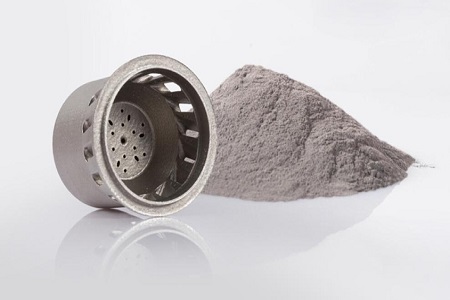 Oct 20, 2021Application of Metal 3D Printing Technology
Oct 20, 2021Application of Metal 3D Printing Technology -
.png) Nov 18, 2021Research Progress of Plasma Spraying Technology for Preparation of Ceramic Coatings
Nov 18, 2021Research Progress of Plasma Spraying Technology for Preparation of Ceramic Coatings -
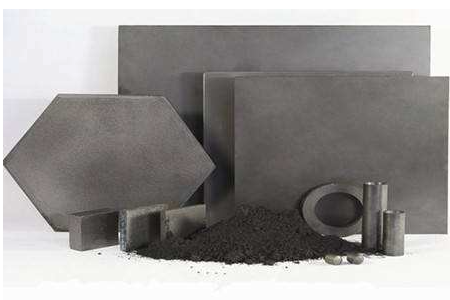 Feb 09, 2022Research progress of B4C-TiB2 composite ceramic materials(1)
Feb 09, 2022Research progress of B4C-TiB2 composite ceramic materials(1) -
.jpg) Jan 12, 2022Silicon carbide, Boron carbide - the "king" of the bulletproof industry
Jan 12, 2022Silicon carbide, Boron carbide - the "king" of the bulletproof industry

